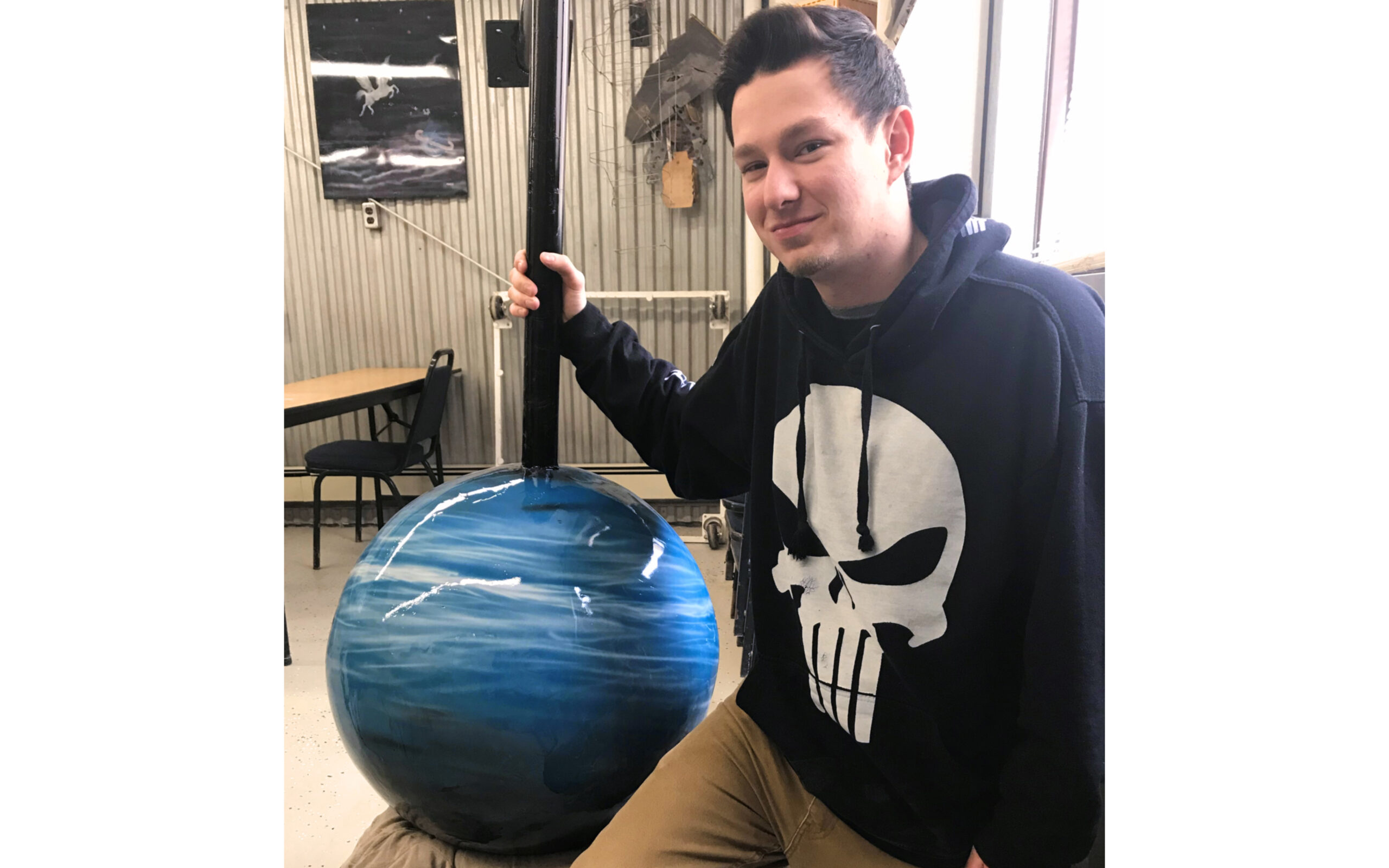
PRESQUE ISLE, Maine — Auto Collision Repair students at Northern Maine Community College usually see their share of bent bumpers, wrecked rocker panels and peeled paint, but one recent graduate tackled a pitted and pockmarked planet.
Neptune — usually located 31 astronomical units (miles) from the sun as part of the Maine Solar System Model along Route 1 in northern Maine — was taken out of orbit and brought to the Automotive Collision Repair lab at NMCC, where NMCC student and part-time artist Christian Goddard went to work.
“Because the inside structure was damaged, I needed to rebuild the shape while retaining the parts of the planet that were still intact,” Goddard said. “I decided to use spray foam to rebuild it, which allowed me to carve it and smooth it out before placing a fiberglass shell over it.”
He primed the surface for airbrushing the needed blues and whites which give Neptune its unique characteristics.
“This type of job is not something that we normally take on, but it was a good fit for last semester’s airbrushing class,” said Bob Collins, Automotive Collision Repair instructor. “The additional fiberglass work presented some unique challenges and was a good learning experience for the students.”
Collins added, “The additional perk is that after Neptune finds its way back into the solar system, Christian and the other students that participated in this work will have a reminder of their time at NMCC, each time they drive by.”
This is not the first time Goddard’s work will be on display. He has participated in art gallery shows in the past. He says the first time he picked up a paintbrush was when he was about 4 or 5. He now primarily creates spray-can art on automobile hoods, benches and poster boards, but this is the first time he has worked with an astronomical canvas.
“I am very proud that it came out the way that it did,” he said. “This was my first three-dimensional object to paint and it was an interesting and challenging project to work on.”
The current maintenance repaired some damage to the fiberglass on the back side of the planet and reconditioned Neptune for hopefully another 20 or more years in orbit.
The University of Maine at Presque Isle, the Northern Maine Museum of Science and the northern Maine community established the Maine Solar System Model. Volunteers built it from 1999 to 2003, adding dwarf planets in 2008. It is the largest solar system model in the Western Hemisphere, with both the planet diameters and distances from the sun set to a scale of one mile equal to an astronomical unit (AU, the distance from the sun to Earth).
The model includes a 50-foot diameter sun and extends 95 miles to the dwarf planet Eris, which is about one inch in diameter, in Topsfield.
For more information, visit umpi@maine.edu or www.nmcc.edu.
Submitted jointly by the Community and Media Relations Office of the University of Maine at Presque Isle and the Development and College Relations Office of Northern Maine Community College.







